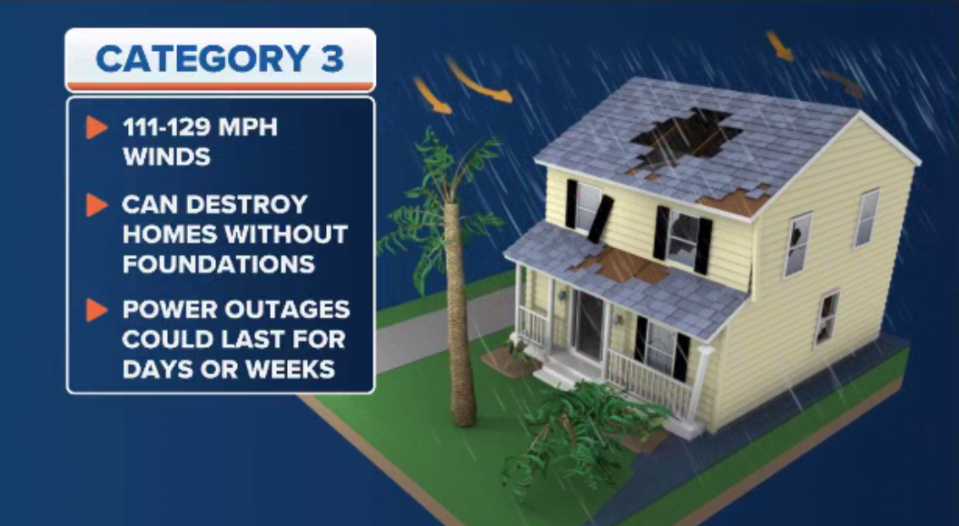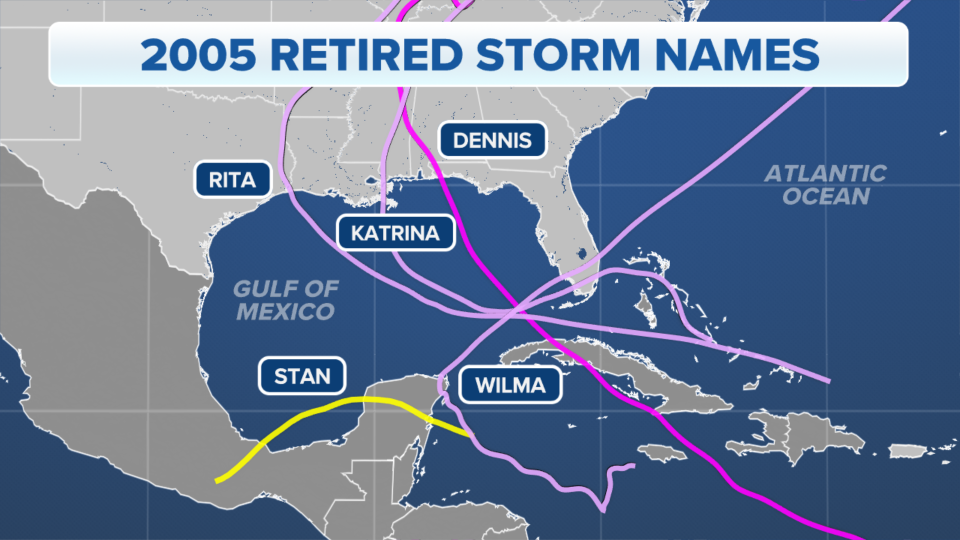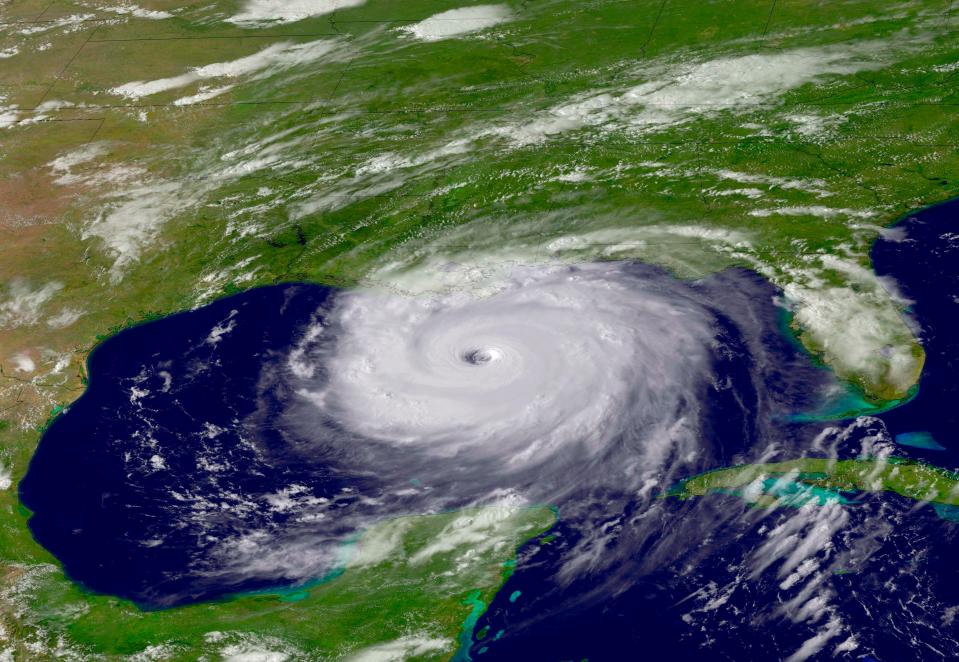What is a Category 3 hurricane?

A hurricane with maximum sustained winds of 111-129 mph is considered to be a Category 3 cyclone on the Saffir-Simpson Hurricane Wind Scale.
Once a hurricane strengthens into Category 3 storm it is considered to be a major hurricane.
The wind scale does not take into account flooding, erosion, tornadoes or storm surge that are often deadly during a Category 3 hurricane.
According to NOAA, well-built homes may incur major damage and many trees will snap and block roadways.
Power outages in coastal and inland communities are usually substantial, with restoration efforts taking weeks to complete.
Along the coast, a Category 3 hurricane can produce a storm surge from 9 to 12 feet, which can propagate inland along rivers and creeks. Large waves along the coast can cause severe erosion and devastation of oceanfront properties.

7 FACTS TO KNOW ABOUT HURRICANES
Prior to the arrival of a storm, widespread evacuations are issued, which extend many miles inland.
After the passage of a Category 3 hurricane, clean-up of debris may take several months.
Once sustained winds are greater than 129 mph, a hurricane is considered to be a Category 4 on the Saffir-Simpson scale.
A Category 4 storm is capable of producing devastating to catastrophic damage, and similar to a Category 3, the cyclone is considered to be a major storm.
On average, three cyclones strengthen into a Category 3 hurricane every season, with the first forming around September 1 and the last towards the end of October.
Hurricane Zeta (115 mph) – 2020
Location: Cocodrie, Louisiana
U.S. damage: $3.9 billion
The hurricane was the twenty-seventh named cyclone of the 2020 season, and its name was used from a supplemental list from the Greek alphabet. Initially, the cyclone was declared a Category 2 at landfall, but that was upped to a Category 3 by a post-review by the National Hurricane Center. The late-season hurricane caused significant damage from the Gulf Coast through North Carolina.
Hurricane Wilma (120 mph) – 2005
Location: Collier County, Florida
U.S. damage: $19 billion
Hurricane Wilma holds the record for being the strongest cyclone in the Atlantic basin. In 2005, the minimum central pressure dropped to 882 millibars. The hurricane weakened to Category 3 strength before making landfall in Southwest Florida. The storm caused at least 30 deaths around the state and significant power outages lasted for weeks. Many of the Florida Keys were inundated by a storm surge of 4-8 feet.

Hurricane Katrina (125 mph) – 2005
Location: Buras, Louisiana
U.S. damage: $108 billion
Hurricane Katrina strengthened into a Category 5 storm while over the Gulf of Mexico but weakened into a Category 3 before landfall in southeastern Louisiana. The failure of dams and a significant storm surge around New Orleans caused around 75% of the region to flood. Katrina holds records for being the costliest hurricane in U.S. history and the deadliest weather event in modern history.

Original article source: What is a Category 3 hurricane?

